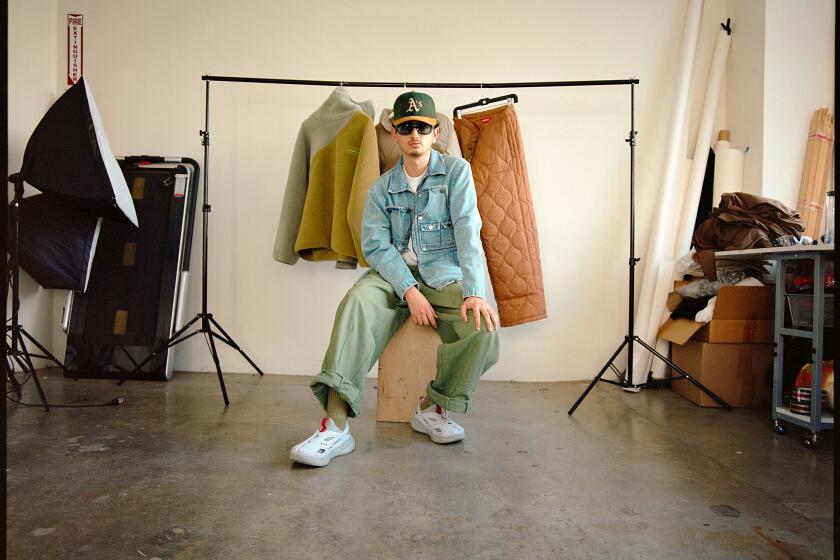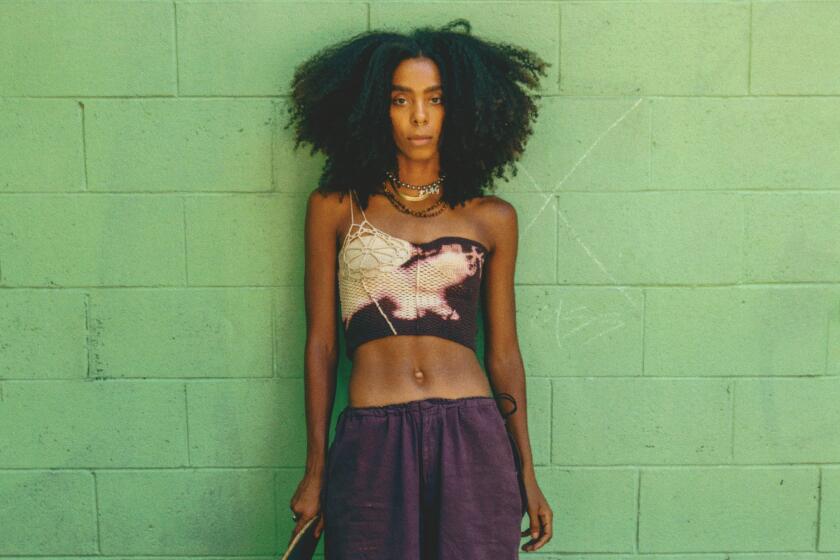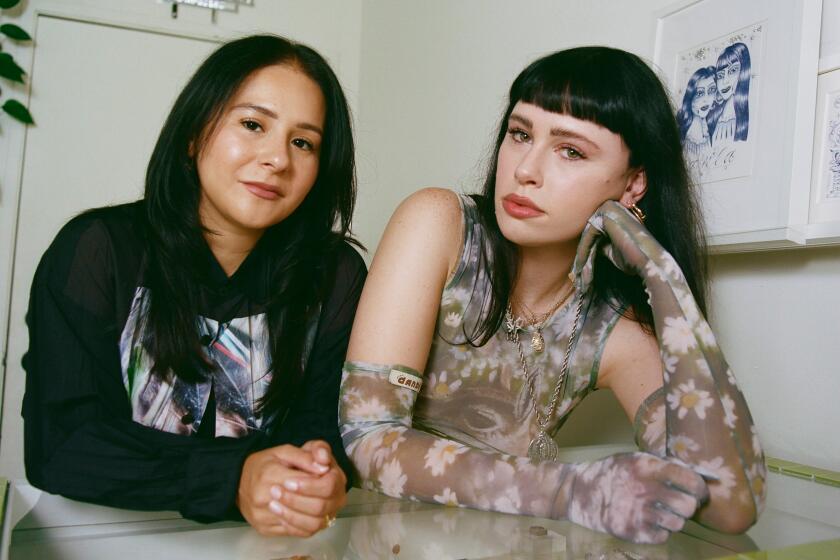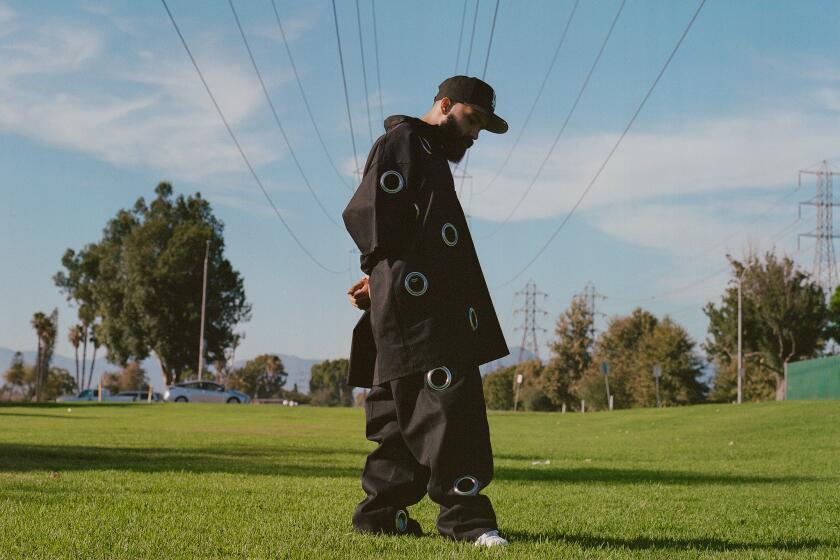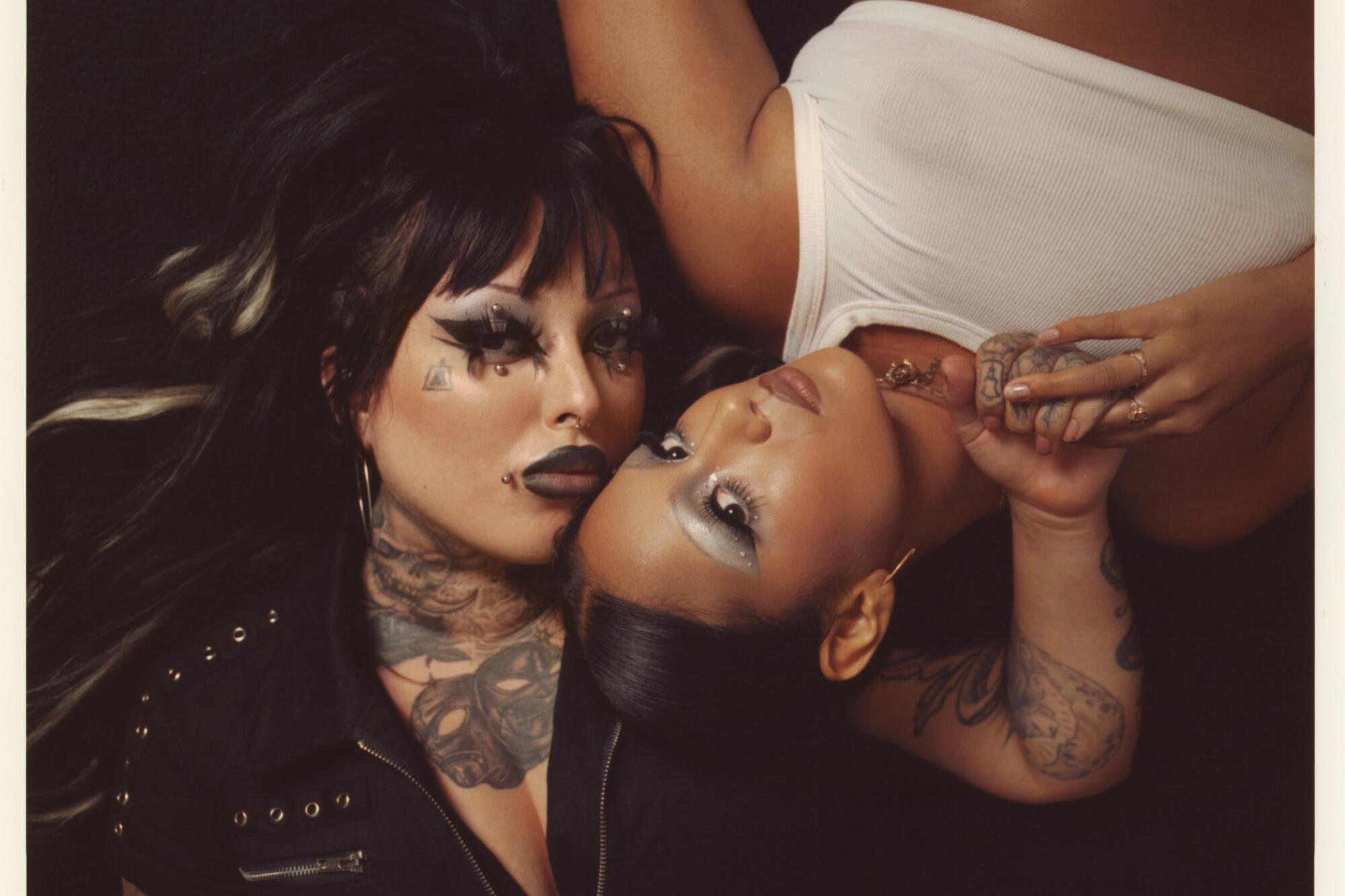
- Share via
This story is part of Image issue 13, “Image Makers,” a celebration of the L.A. luminaries redefining the narrative possibilities of fashion. Read the whole issue here.
Image making is not always a solo act. It is often, as model and creative director Sarita Fernandez and makeup artist Selena Ruiz show, a team effort. In their respective fields, they are meticulous practitioners of the craft of reflecting one’s experience through imagery — Fernandez, 23, in front of the camera and Ruiz, 27, behind the scenes. The former has, in just a few years, ascended the ranks of modeling, working on campaigns for brands such as Willy Chavarria, True Religion, Paisaboys, Born X Raised and Mom n Dad Vintage, among others. Meanwhile, Ruiz has made a name for herself as one of the most talented makeup artists in the game. The two met up recently to discuss their work, friendship and what means to hold each other down on and off set. — Ian F. Blair
Selena Ruiz: You want to tell them?
Sarita Fernandez: I could. So …
SR: We met at a photo shoot, basically. I don’t know. We just clicked.
SF: I have been wanting to work with Selena for a long time. And it’s funny — I was scared that she wasn’t going to want to work with me. Because I was a little model. Like, I’m not big, you know. At that time that’s how I thought. I was like, “Oh, I don’t know she’ll respond,” and she ended up responding. We’ve been friends ever since.
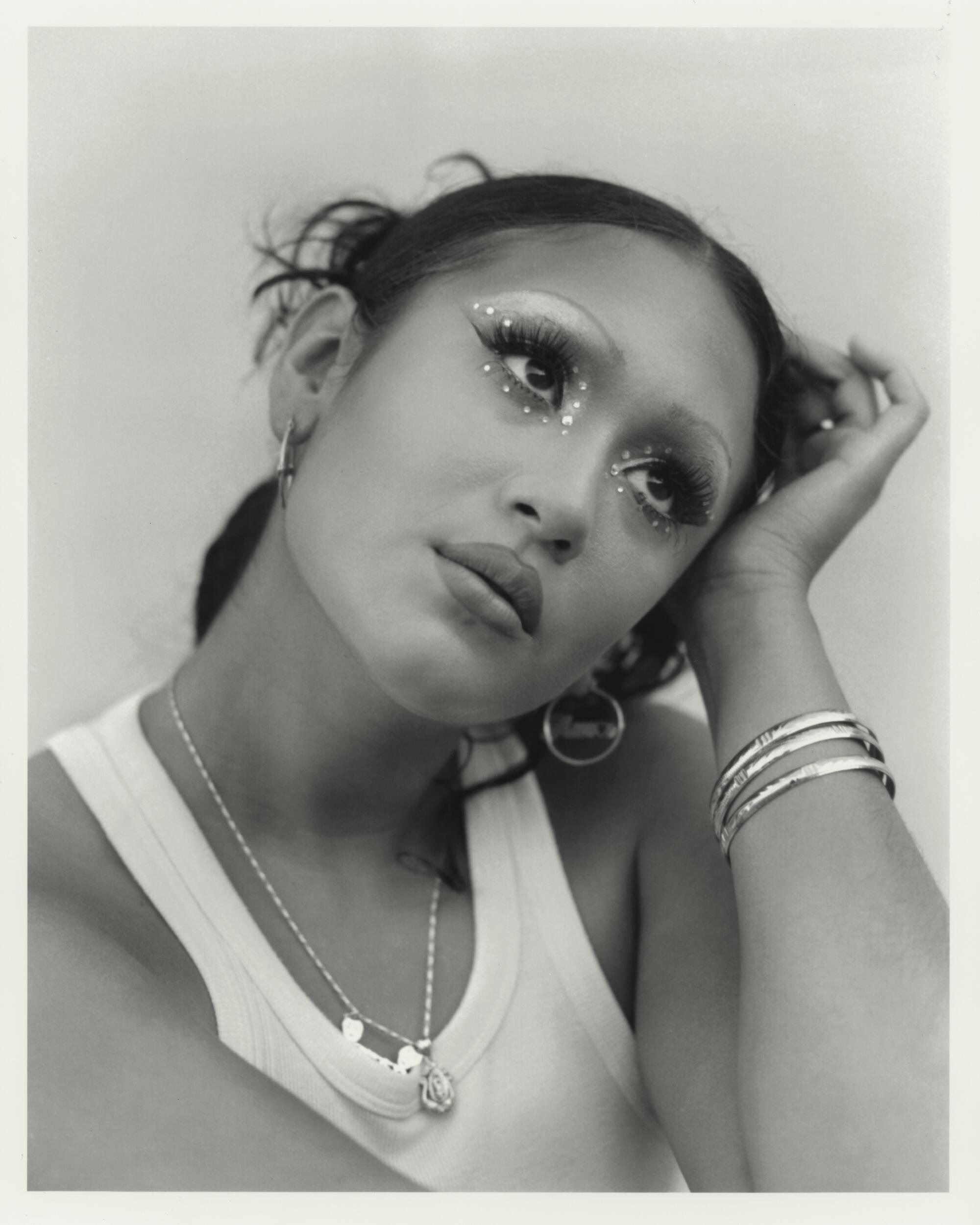
SR: Sometimes we’re on sets or on shoots where it’s very white. So, that’s a big way we have connected — we have each other to hold. We’re each other’s security blanket on shoots where we feel like we don’t really fit in.
SF: I could not have said that any better. Honestly, we are each other’s comfort. That’s how we show each other support. I’m always giving her words of affirmation. I’m always like, “Your s— is so fire! You’re already doing it!” Gassing her up because it’s true.
Personally, I have a hard time accepting it. But it’s nice to hear from someone who is close to me. I don’t really have that many people in my circle. She’s one of them. So it’s nice.
The L.A.-based designer behind TOMBOGO uses sustainable materials to create clothes that feel fluid, scrappy and utilitarian.
SR: [On a typical shoot day], I show up to Sara’s house or she’ll come to my house. We’ll get ready and then we’ll just go together. Usually, we stop to get food before and then we’ll just go and do our thing. And then we end the night, and we’ll eat some more, or we’ll just go home. Our last date was sushi. We love to get pho.
SF: Pho 87!
SR: Yeah. A classic. [When] I show up to the studio, I set up my stuff. The talent is usually already getting her hair done. I’ll switch her over to my chair, which is a higher chair. And then I’ll just start working on her while hair is finishing, and I get her ready.
SF: That’s kind of my job. I’m just there, getting my makeup done. Honestly, it feels great — if Selena is my makeup artist, I know that my face is going to look good. She knows my skin shade. I know my face is not going to look more pale than my body, you know? When I’m in the chair, I tell her, “Make me look snatched.” Or I’m like, “Give me fat lips.” That’s another one of our processes — while she’s doing my makeup, we catch up on things. Then I just go and perform.
SR: And I’m in the back, recording.
SF: She takes the best BTS.
SR: That’s part of my job too. I just have to tend to the model. I’m there for them.
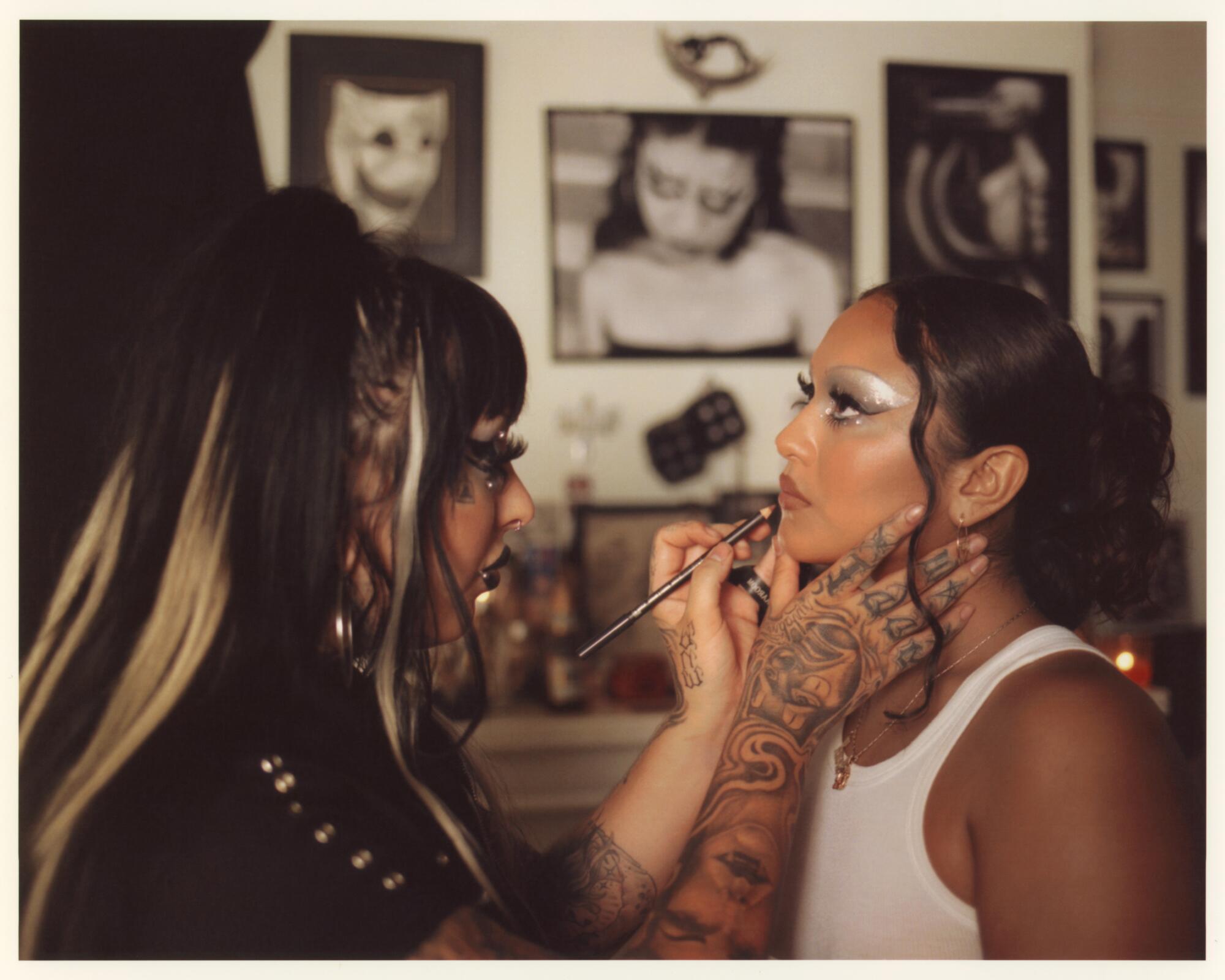
SF: Sometimes, I’m panicking when I’m in front of the camera. And when that does happen, I have to tell myself, I’m OK. Or sometimes I just look at Selena, and I’m like, I’m good. That’s another thing that helps me — her presence.
SR: She is really great at what she does. She says she panics — I’ve never seen her panic before. She’s very good in front of the camera — like one of the best I’ve ever seen, for sure.
My story is kind of long: I started getting into makeup after my mom passed. I was 16 at that time. I’m very hard-headed and didn’t want anyone to know that I was going through it. So, I used makeup to kind of mask that. I was living in Riverside — I was born and raised in Riverside.
Three years later, I was 19 when I started to do the looks that I’m known for, like the really crazy graphic liners and just out-there stuff. When I was 21, I moved to L.A. That’s when I started to try to do makeup. But in between I was always a budtender, always worked at the weed shops. It wasn’t until 2020 when I was able to quit my job at the shop and then just focus on makeup full-time.
SF: I started in streetwear. My first op was for Paisaboys and Born X Raised. That’s how I started doing shoots. It was an interesting time because I was a first-year at UCLA. I originally wanted to become an educator. I studied education. [Modeling] wasn’t anything serious for me at all. But I had a lot of friends who are photographers, and so they would post [my photos], and bigger brands started reaching out to me.
I got my big break when I did American Eagle, and I was doing work with them for a while. Then I got signed. That’s when I started working with bigger brands and doing a lot of commercial work, which is what I do now. It’s been an interesting journey.
I grew up in Northeast L.A. I’m from Highland Park, and life before modeling was very much just school because I have two strict immigrant parents. To them, you’re either a doctor or a lawyer. That’s the only way you’re going to be successful, and so what I’m doing isn’t really, like, a real job to them. Life before modeling was definitely just me studying every day, literally killing myself just to get good grades.
SR: So wholesome. Before makeup I was a party animal. Really just reckless. I was not studying. I didn’t go to college, I graduated high school. My dad got deported back to Mexico when I was 8 years old. After that, I started to experience anxiety. My mom put me on Prozac when I was young — it was just all bad.
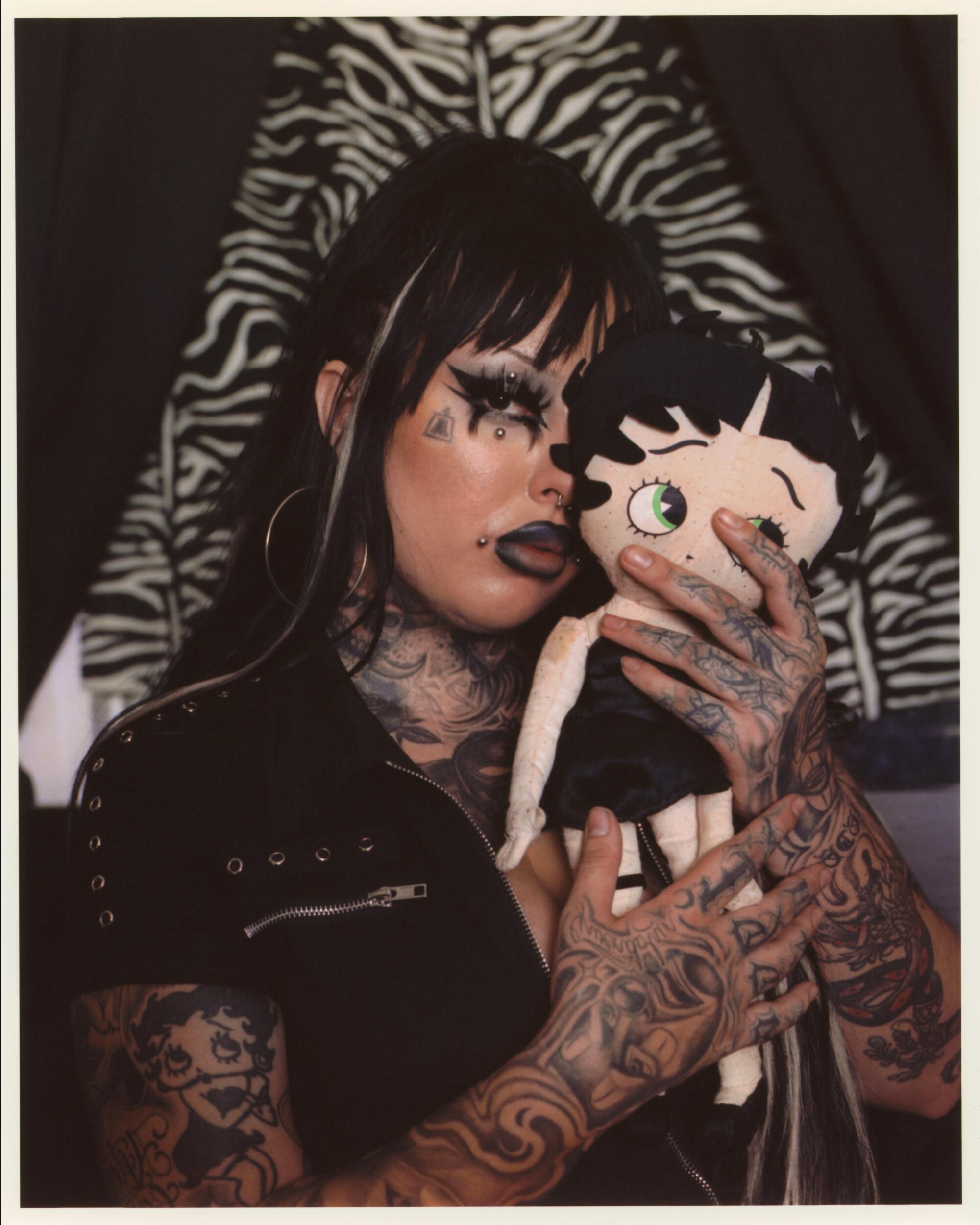
Makeup makes me feel really comfortable and safe. It’s what helped me deal with the grief. My favorite look that I got to create was, I got an opportunity to do this girl’s makeup for her funeral. She [took her life by] suicide, and her sister reached out to me and asked me if I’d be willing to do her makeup because she was a fan of my work. She shaved her eyebrows off, and kind of did her makeup like how I did. So, her sister had asked me if I was willing to do her makeup for her viewing and to be put to rest in, basically. That was honestly the most meaningful makeup I probably will ever do. Especially because what I do stems from losing people. It was a way of healing for me, getting to put someone to rest and being the one to do that.
In my personal work, I like to play around with blacks and grays and silver and metal balls. When I was younger, I was a super emo kid. And I still hold on to that part of me, I still hold on to that younger version of me really tight. I think I show that a lot in my work when I do anything that looks like dark — you’ll know that I did it, it has my touch to it.
SF: My work is a reflection of me and my experiences. It is genuine and it is a representation of my culture. When I do my personal work, I think I just try to present myself as best as I can and how I’m feeling at that moment. I do a lot of shoots at the beach, because I love the beach; also, my family comes from a coastal region. And I feel the most beautiful when I’m photographed at the beach. And then when I do something with Kids of Immigrants, when I creative direct something, that’s more like I’m telling someone else’s story — or I’m trying to elevate someone else’s story, because it’s important for other people to hear this story as well.
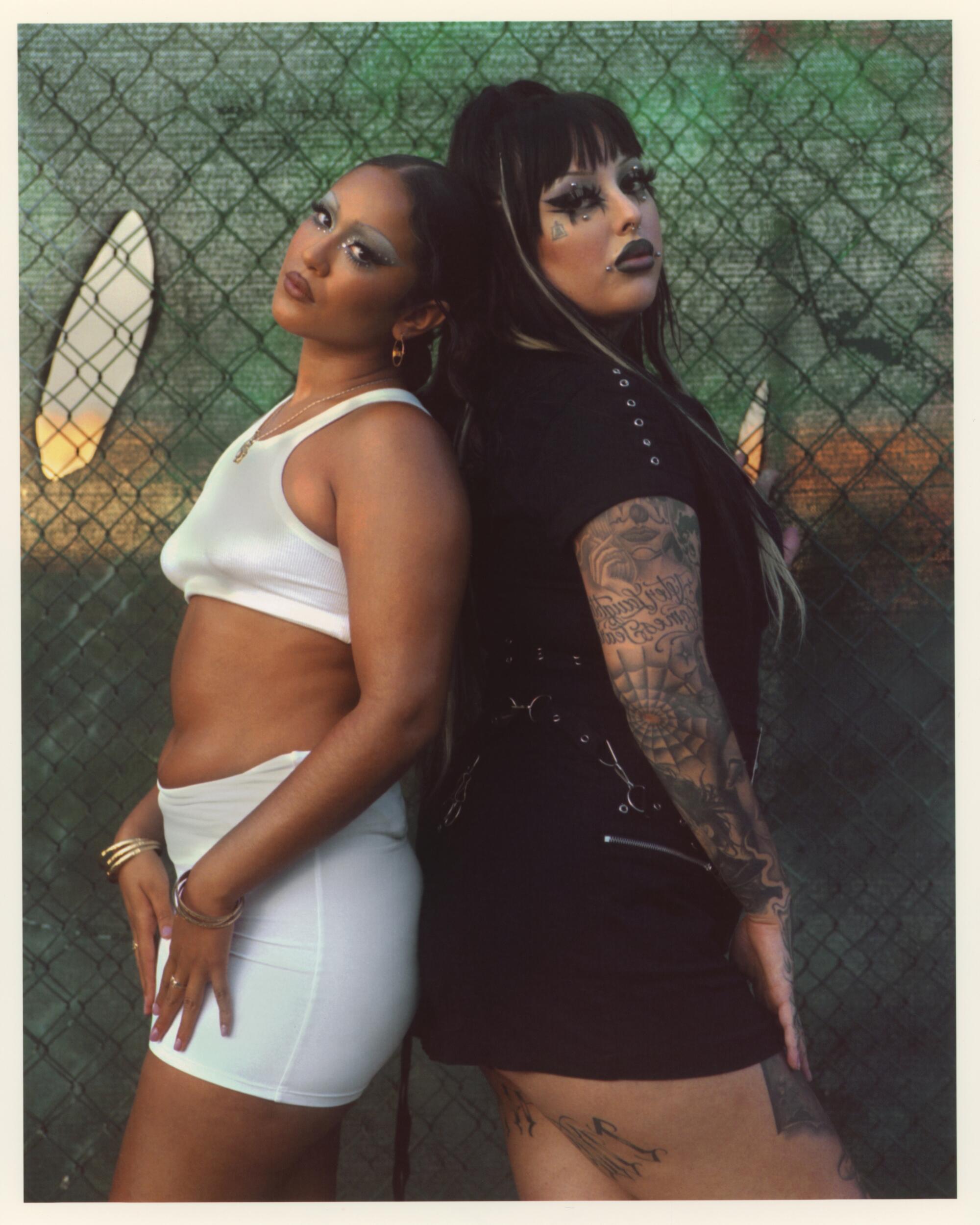
SR: I feel like she accessorizes too — she wears her gold nameplate in every shot that she does, or sometimes she’ll put a flower in her hair or something.
SF: I don’t own a lot of jewelry, and sometimes I have to style myself. So, I guess that’s a part of my story. Everything is done by me. Everything is done by the people around me and it’s all a collaboration. My friends who are creatives inspire me daily. They keep me going because I see their integrity and their passion for representing themselves and where we come from. Their authenticity and rawness is what inspires me and pushes me to create more.
SR: For shoots, normally, whoever is in charge will usually put together a mood board for lighting, outfits, and hair and makeup. I also go based off the model. I’ll usually search their Instagrams before a shoot and I’ll just study their face and see what they’ve done in the past.
SF: I’m extremely aware of my face, I feel like that’s the only thing that I’m worried about. I want to look good. Even when I’m sitting in the chair, what am I looking at in the mirror? My face. When I’m getting photographed, I have to think about the angle because my head is shaped a certain way, or I want my jawline to be defined. I literally always think about my face or I’m always aware of it or make mental notes.
My friendship with Selena is so crucial in this line of work because we are two rarities. We come from culture and places that no one else on set really has a connection to. This holds us together and we find agency within our friendship.
SR: We always do really great things. Every time we do something, everyone loves it. We have a really good relationship. I just get excited for our future. Because I know she’s gonna grow, I’m gonna grow, we’re going to go up there together. We’re always kind of daydreaming. I think that keeps us both motivated to know that we’re gonna be there.
Lettering design by Vivi Naranjo/For The Times; typeface: Goliagolia.

More stories from Image
